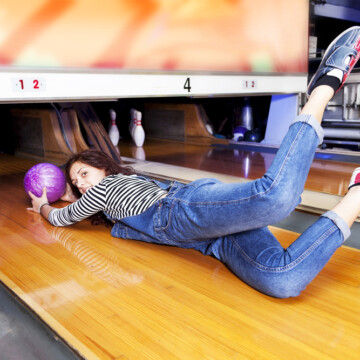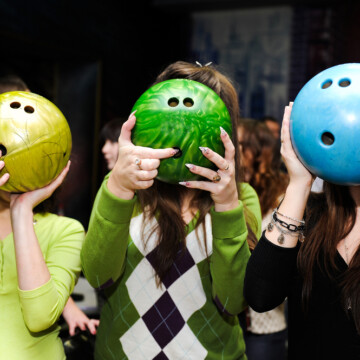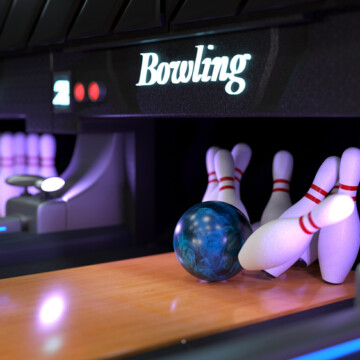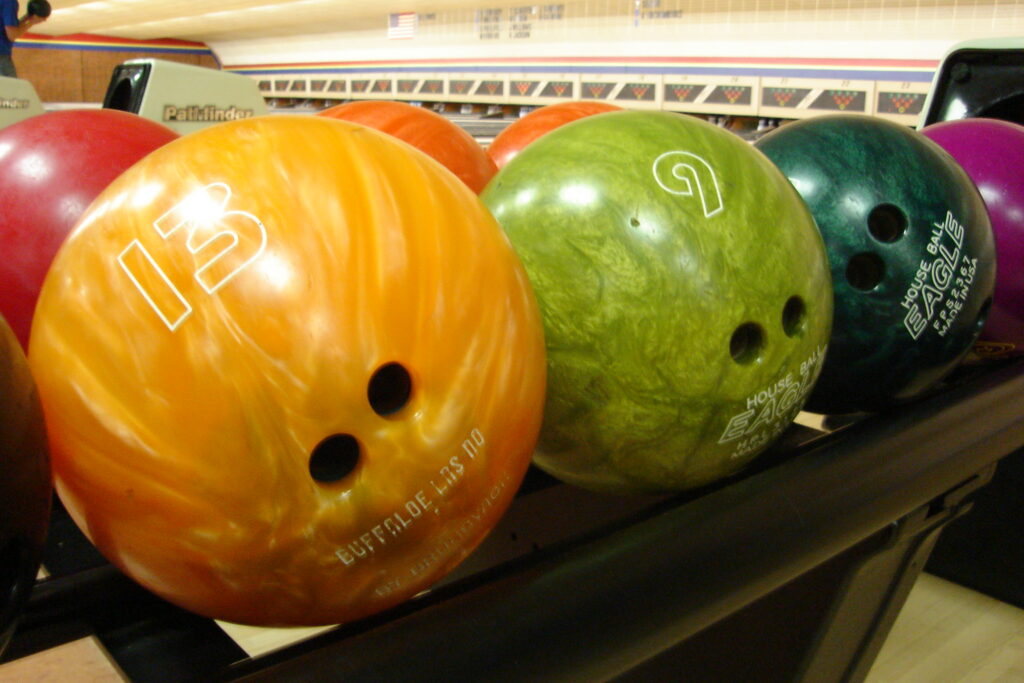
Have you ever wondered what's inside bowling balls? You're not alone. Many wonder whether they are solid or hollow.
To satisfy your curiosity, we'll give you the details on the internal structure of bowling balls, so you'll no longer have to wonder what the smooth exterior of your bowling ball is hiding.
By the end, you’ll know whether they’re hollow and, more importantly, why.
Contents
Are Bowling Balls Hollow?
Are bowling balls hollow? No. Bowling balls are not hollow—instead, there are various materials of different densities beneath a bowling ball’s outer shell.
These materials determine the ball's weight and balance. This statement is true for all bowling balls, no matter the weight or size.
Bowling ball manufacturers manufacture balls to hook or roll straight, while others are made to roll slower or faster than the standard.
Bowling ball manufacturing is very much a science.
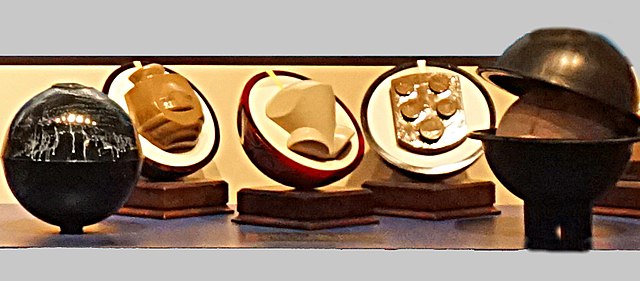
What’s Inside a Bowling Ball?
Now that you understand that bowling balls aren’t hollow, it’s time to get into what’s inside them. You’d be surprised at the wide variety of materials you’ll find in a modern bowling ball.
If you cut a bowling ball in half, you would see that a bowling ball consists of three parts: the inner core, the outer core, and the coverstock.
Other balls, however, only have two parts: the inner core and the coverstock.
Here’s some helpful information about each of these:
- Inner core. The inner core is the heaviest part of the ball and is responsible for much of the ball's weight. It is composed of a dense material that is tightly packed together. In modern balls, the inner core is comprised of a weight block.
- Outer core. On the other hand, the outer core is made of lighter filler material and helps control the ball's speed.
- Coverstock. The coverstock is the outermost layer and is usually made of polyester or urethane. The coverstock is responsible for the ball's color and design, speed, and hooking potential (the bowling ball reactions) to the bowling lane.
There is also pancake, symmetrical, and asymmetrical bowling ball cores available. Here’s what you need to know about each of these:
- Pancake cores have no weight block. They are beginner-friendly and great for straight bowlers. These cores, as the name implies, are stacked in little blocks to create the shape of pancakes. Bowling alley balls usually have the pancake bowling ball core. The pancake core is also excellent for picking up spares.
- Symmetrical cores have an even weight distribution but more hook potential than pancake cores. Two-piece bowling balls commonly use these cores. A bowling ball with a symmetrical core is ideal for intermediate bowlers who have learned the fundamentals of the sport.
- Asymmetrical cores are the most complex and have an uneven weight distribution, giving the ball even more hook potential. Professional bowlers are more likely to use balls with asymmetrical cores.
The Coverstock
The coverstock is the outermost layer of a bowling ball, which encloses all of the internal components that give the ball its weight and balance.
If you shop for a bowling ball today, you’ll notice that they’re made of various coverstock materials. Let us explain below:
Polyester/ Plastic
Polyester is a strong, durable synthetic material. A cheap polyester or rubber bowling ball is best used for straight bowlers.
Plastic balls incur less friction and more skid than other materials, allowing the ball to maintain a straight trajectory. Plastic balls are also great for beginners since they have little to no hook potential.
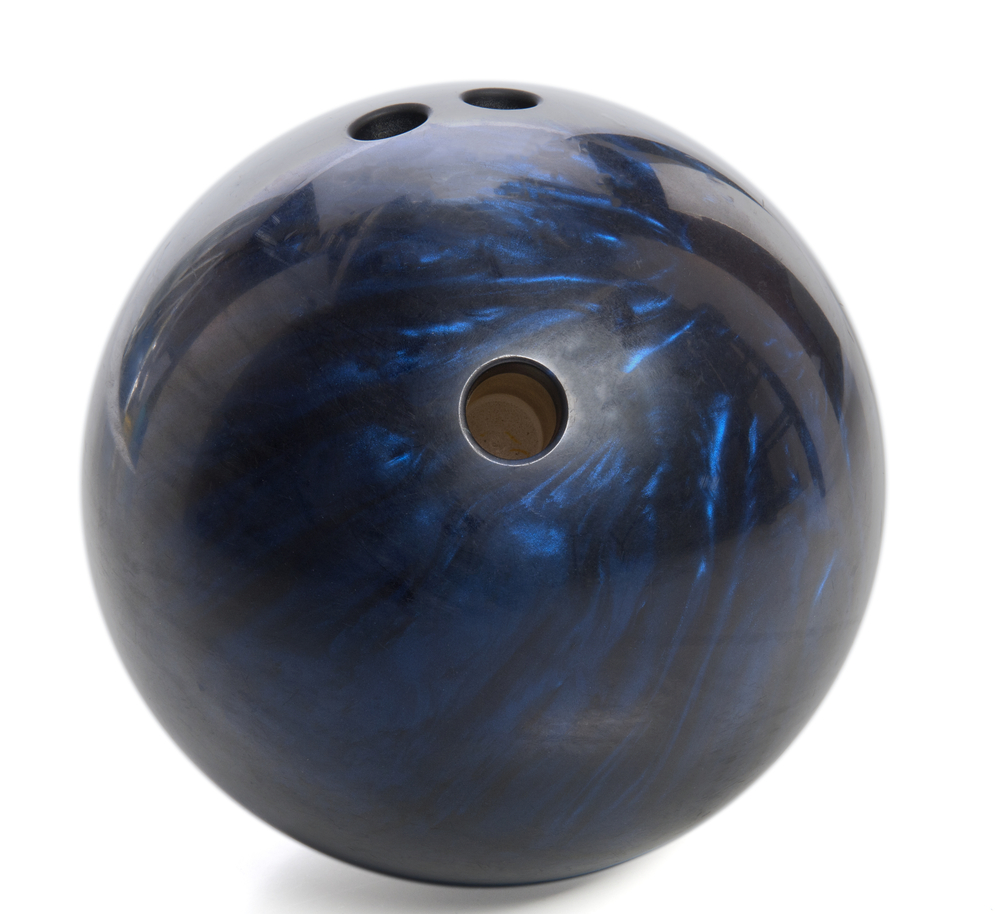
Urethane
Urethane is a soft, flexible material often used in a bowling ball’s coverstock. It has a higher friction coefficient than polyester, giving it more hook potential.
Urethane bowling balls are great for bowlers who want to learn how to hook.
Urethane balls are great to start with, but if you're more experienced, you'd want to look at the reactive resin coverstock.
Reactive Resin
A more recent addition to the world of bowling balls, reactive resin, is made of a mixture of urethane and polyurethane, giving the ball the best of both worlds. It is durable like polyester but also has hook potential.
Reactive resin is the most popular type of bowling ball on the market today. It is excellent for all types of bowlers, from beginners to professionals. It will give you a snappy, aggressive hook when you need it and a straight shot when necessary.
Fun fact:
The earliest bowling balls were hardwood or rubber. These hard rubber bowling balls were more durable, but it was also more expensive.
Hardwood was cheaper, but it didn't last as long. Also, if the wooden balls cracked, they would split into pieces and have to be replaced.
Have Bowling Balls Always Been Solid?
Bowling balls have always been solid and continue to be solid. However, their materials and weight distribution possibilities have changed over time as technology advances. The changes better suit the needs of the sport and athletes.
The misconception that bowling balls are hollow might come from the fact that some balls have a hole in the center. This hole is not for weight distribution but for gripping purposes.
Also, people think that since the balls differ in size and weight, they must be hollow to achieve this. But that is not the case. The inner and outer cores determine the ball’s speed, weight, hook potential, and more.
Which Bowling Ball Type Should You Choose?
Now that you’ve got sufficient knowledge about bowling ball construction, it's time to choose one for yourself. Your bowling ball’s materials will significantly impact your scoring abilities.
Consider the Coverstock Material For Your Bowling Level
Beginner Level Coverstock
If you are a beginner, you should choose a ball with a polyester or plastic cover. Plastic bowling balls are the cheapest and will skid more, making them easier for you to control.
Intermediate Level Coverstock
If you are an intermediate bowler, you should choose a ball with a urethane cover. These balls have good hooking potential, giving you substantial control over your shots. Urethane is also more durable than other materials, so your ball will last for years.
Intermediate and Above Level Coverstock
If you’re up for it and want to refine your game, you can also choose a ball with a reactive resin cover. These balls are more expensive, but they give you even more hooking potential so you can explore more possibilities regarding your bowling strategy.
Masters of the game should choose a ball with a reactive resin cover – any other ball type could stifle your potential. You need max control and durability. You’ll get it with this ball material.
Regardless of the ball, ensure the finger holes are the correct size and positioned at the right spot for your fingers. If unsure, you can ask a professional at your local bowling alley or bowling ball shop.
Consider the Weight
The weight of the ball is also significant. Heavier bowling balls will be more difficult to throw, but they will also have more power upon release. Light bowling balls are easier to throw, but they will not have as much power.
You need to find a balance that works for you. It is probably best to start with lighter bowling balls if you are a beginner. You can always move up to a heavier ball as you gain more experience with the sport.
Note: Professional bowlers should be concerned about their ball’s core. Often, the easiest way to determine whether a pancake, symmetrical, or asymmetrical core is best is to try them all out. You may find that the core you thought you needed is not the best fit for you.
Do Bowling Balls Have Liquid Centers?
Do bowling balls have liquid centers, no. How do I know? I've had a few bowling balls to crack, and they have never leaked. They were, well, just cracked. I'm not sure where this misconception came from, but liquid in the center is definitely not a pro's sport.
There's nothing in a bowling ball's core except the weight block(s). A liquid filled bowling ball would be hard to control.
Related Articles
Bowling balls have come a long way since they were first introduced – no doubt about it. And while they might not be made of the same materials as they were back then, hollow bowling balls never existed.
With the information we’ve shared in this article, you can put the 'hollow ball' theory to rest. We hope this article has been helpful to you, and we encourage you to keep peeling back the layers of bowling – there’s a lot more to discover!
Kira Byrd, a Certified Fraud Examiner, holds a B.S. in Accounting from the University of Alabama at Birmingham. With a passion for bowling from her childhood, Kira has poured her expertise and personal experiences into creating and nurturing Bowling For Beginners. Kira's mission is to meet new bowlers where they are and guide them toward consistently achieving higher scores. With a focus on skill development and strategic techniques, she empowers readers to take control of their game and unlock their true potential.
Bowling For Beginners embodies strict editorial integrity, ensuring reliable and unbiased information. Kira's commitment to delivering valuable insights and practical strategies is reflected in every article. Here's an explanation of our editorial policy and how we get money.


